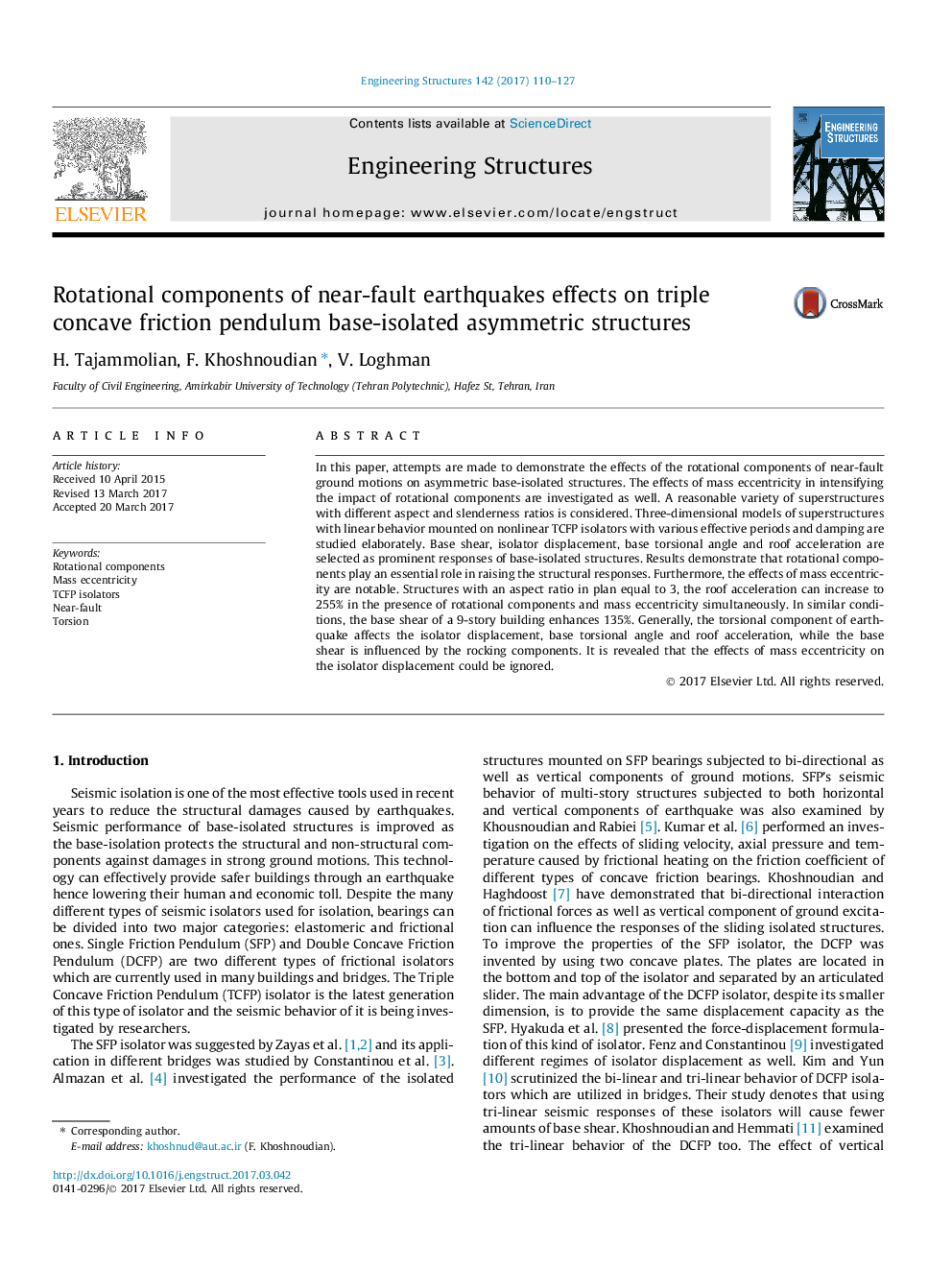| Article ID | Journal | Published Year | Pages | File Type |
|---|---|---|---|---|
| 4919961 | Engineering Structures | 2017 | 18 Pages |
Abstract
In this paper, attempts are made to demonstrate the effects of the rotational components of near-fault ground motions on asymmetric base-isolated structures. The effects of mass eccentricity in intensifying the impact of rotational components are investigated as well. A reasonable variety of superstructures with different aspect and slenderness ratios is considered. Three-dimensional models of superstructures with linear behavior mounted on nonlinear TCFP isolators with various effective periods and damping are studied elaborately. Base shear, isolator displacement, base torsional angle and roof acceleration are selected as prominent responses of base-isolated structures. Results demonstrate that rotational components play an essential role in raising the structural responses. Furthermore, the effects of mass eccentricity are notable. Structures with an aspect ratio in plan equal to 3, the roof acceleration can increase to 255% in the presence of rotational components and mass eccentricity simultaneously. In similar conditions, the base shear of a 9-story building enhances 135%. Generally, the torsional component of earthquake affects the isolator displacement, base torsional angle and roof acceleration, while the base shear is influenced by the rocking components. It is revealed that the effects of mass eccentricity on the isolator displacement could be ignored.
Keywords
Related Topics
Physical Sciences and Engineering
Earth and Planetary Sciences
Geotechnical Engineering and Engineering Geology
Authors
H. Tajammolian, F. Khoshnoudian, V. Loghman,
